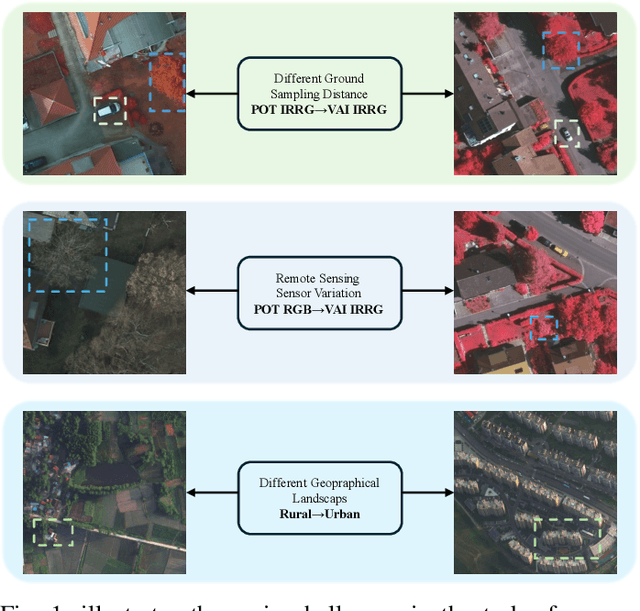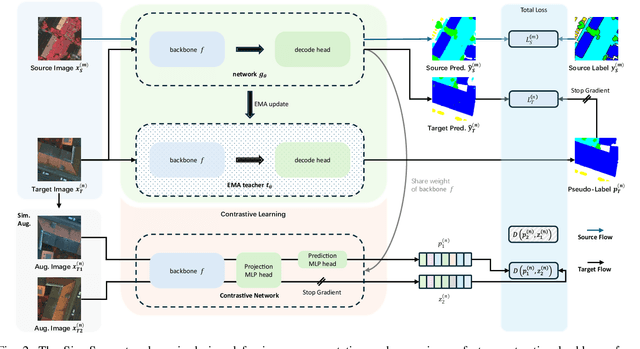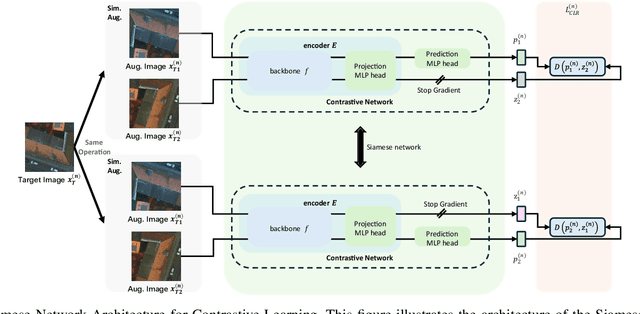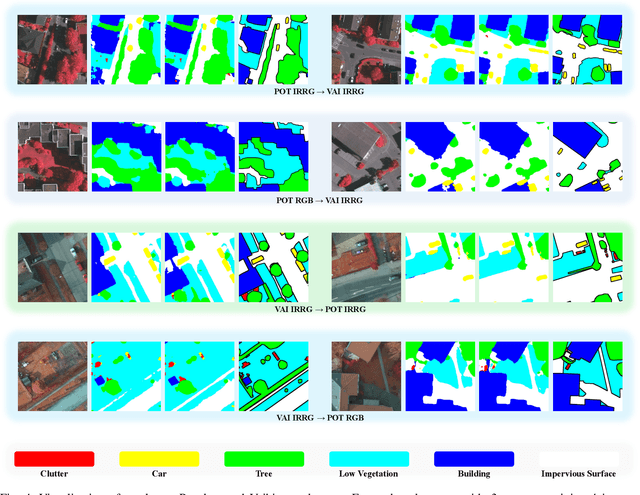Wen Luo
Mitigating Overthinking through Reasoning Shaping
Oct 10, 2025Abstract:Large reasoning models (LRMs) boosted by Reinforcement Learning from Verifier Reward (RLVR) have shown great power in problem solving, yet they often cause overthinking: excessive, meandering reasoning that inflates computational cost. Prior designs of penalization in RLVR manage to reduce token consumption while often harming model performance, which arises from the oversimplicity of token-level supervision. In this paper, we argue that the granularity of supervision plays a crucial role in balancing efficiency and accuracy, and propose Group Relative Segment Penalization (GRSP), a step-level method to regularize reasoning. Since preliminary analyses show that reasoning segments are strongly correlated with token consumption and model performance, we design a length-aware weighting mechanism across segment clusters. Extensive experiments demonstrate that GRSP achieves superior token efficiency without heavily compromising accuracy, especially the advantages with harder problems. Moreover, GRSP stabilizes RL training and scales effectively across model sizes.
Well Begun is Half Done: Low-resource Preference Alignment by Weak-to-Strong Decoding
Jun 09, 2025



Abstract:Large Language Models (LLMs) require alignment with human preferences to avoid generating offensive, false, or meaningless content. Recently, low-resource methods for LLM alignment have been popular, while still facing challenges in obtaining both high-quality and aligned content. Motivated by the observation that the difficulty of generating aligned responses is concentrated at the beginning of decoding, we propose a novel framework, Weak-to-Strong Decoding (WSD), to enhance the alignment ability of base models by the guidance of a small aligned model. The small model first drafts well-aligned beginnings, followed by the large base model to continue the rest, controlled by a well-designed auto-switch mechanism. We also collect a new dataset, GenerAlign, to fine-tune a small-sized Pilot-3B as the draft model, which effectively enhances different base models under the WSD framework to outperform all baseline methods, while avoiding degradation on downstream tasks, termed as the alignment tax. Extensive experiments are further conducted to examine the impact of different settings and time efficiency, as well as analyses on the intrinsic mechanisms of WSD in depth.
TIME: A Multi-level Benchmark for Temporal Reasoning of LLMs in Real-World Scenarios
May 19, 2025Abstract:Temporal reasoning is pivotal for Large Language Models (LLMs) to comprehend the real world. However, existing works neglect the real-world challenges for temporal reasoning: (1) intensive temporal information, (2) fast-changing event dynamics, and (3) complex temporal dependencies in social interactions. To bridge this gap, we propose a multi-level benchmark TIME, designed for temporal reasoning in real-world scenarios. TIME consists of 38,522 QA pairs, covering 3 levels with 11 fine-grained sub-tasks. This benchmark encompasses 3 sub-datasets reflecting different real-world challenges: TIME-Wiki, TIME-News, and TIME-Dial. We conduct extensive experiments on reasoning models and non-reasoning models. And we conducted an in-depth analysis of temporal reasoning performance across diverse real-world scenarios and tasks, and summarized the impact of test-time scaling on temporal reasoning capabilities. Additionally, we release TIME-Lite, a human-annotated subset to foster future research and standardized evaluation in temporal reasoning. The code is available at https://github.com/sylvain-wei/TIME , and the dataset is available at https://huggingface.co/datasets/SylvainWei/TIME .
GeoRAG: A Question-Answering Approach from a Geographical Perspective
Apr 03, 2025



Abstract:Geographic Question Answering (GeoQA) addresses natural language queries in geographic domains to fulfill complex user demands and improve information retrieval efficiency. Traditional QA systems, however, suffer from limited comprehension, low retrieval accuracy, weak interactivity, and inadequate handling of complex tasks, hindering precise information acquisition. This study presents GeoRAG, a knowledge-enhanced QA framework integrating domain-specific fine-tuning and prompt engineering with Retrieval-Augmented Generation (RAG) technology to enhance geographic knowledge retrieval accuracy and user interaction. The methodology involves four components: (1) A structured geographic knowledge base constructed from 3267 corpora (research papers, monographs, and technical reports), categorized via a multi-agent approach into seven dimensions: semantic understanding, spatial location, geometric morphology, attribute characteristics, feature relationships, evolutionary processes, and operational mechanisms. This yielded 145234 classified entries and 875432 multi-dimensional QA pairs. (2) A multi-label text classifier based on BERT-Base-Chinese, trained to analyze query types through geographic dimension classification. (3) A retrieval evaluator leveraging QA pair data to assess query-document relevance, optimizing retrieval precision. (4) GeoPrompt templates engineered to dynamically integrate user queries with retrieved information, enhancing response quality through dimension-specific prompting. Comparative experiments demonstrate GeoRAG's superior performance over conventional RAG across multiple base models, validating its generalizability. This work advances geographic AI by proposing a novel paradigm for deploying large language models in domain-specific contexts, with implications for improving GeoQA systems scalability and accuracy in real-world applications.
Odysseus Navigates the Sirens' Song: Dynamic Focus Decoding for Factual and Diverse Open-Ended Text Generation
Mar 11, 2025Abstract:Large Language Models (LLMs) are increasingly required to generate text that is both factually accurate and diverse across various open-ended applications. However, current stochastic decoding methods struggle to balance such objectives. We introduce Dynamic Focus Decoding (DFD), a novel plug-and-play stochastic approach that resolves this trade-off without requiring additional data, knowledge, or models. DFD adaptively adjusts the decoding focus based on distributional differences across layers, leveraging the modular and hierarchical nature of factual knowledge within LLMs. This dynamic adjustment improves factuality in knowledge-intensive decoding steps and promotes diversity in less knowledge-reliant steps. DFD can be easily integrated with existing decoding methods, enhancing both factuality and diversity with minimal computational overhead. Extensive experiments across seven datasets demonstrate that DFD significantly improves performance, providing a scalable and efficient solution for open-ended text generation.
FEA-Bench: A Benchmark for Evaluating Repository-Level Code Generation for Feature Implementation
Mar 09, 2025Abstract:Implementing new features in repository-level codebases is a crucial application of code generation models. However, current benchmarks lack a dedicated evaluation framework for this capability. To fill this gap, we introduce FEA-Bench, a benchmark designed to assess the ability of large language models (LLMs) to perform incremental development within code repositories. We collect pull requests from 83 GitHub repositories and use rule-based and intent-based filtering to construct task instances focused on new feature development. Each task instance containing code changes is paired with relevant unit test files to ensure that the solution can be verified. The feature implementation requires LLMs to simultaneously possess code completion capabilities for new components and code editing abilities for other relevant parts in the code repository, providing a more comprehensive evaluation method of LLMs' automated software engineering capabilities. Experimental results show that LLMs perform significantly worse in the FEA-Bench, highlighting considerable challenges in such repository-level incremental code development.
Explanation based In-Context Demonstrations Retrieval for Multilingual Grammatical Error Correction
Feb 12, 2025



Abstract:Grammatical error correction (GEC) aims to correct grammatical, spelling, and semantic errors in natural language text. With the growing of large language models (LLMs), direct text generation has gradually become the focus of the GEC methods, and few-shot in-context learning presents a cost-effective solution. However, selecting effective in-context examples remains challenging, as the similarity between input texts does not necessarily correspond to similar grammatical error patterns. In this paper, we propose a novel retrieval method based on natural language grammatical error explanations (GEE) to address this issue. Our method retrieves suitable few-shot demonstrations by matching the GEE of the test input with that of pre-constructed database samples, where explanations for erroneous samples are generated by LLMs. We conducted multilingual GEC few-shot experiments on both major open-source and closed-source LLMs. Experiments across five languages show that our method outperforms existing semantic and BM25-based retrieval techniques, without requiring additional training or language adaptation. This also suggests that matching error patterns is key to selecting examples.
SiamSeg: Self-Training with Contrastive Learning for Unsupervised Domain Adaptation in Remote Sensing
Oct 17, 2024



Abstract:Semantic segmentation of remote sensing (RS) images is a challenging task with significant potential across various applications. Deep learning, especially supervised learning with large-scale labeled datasets, has greatly advanced this field. However, acquiring high-quality labeled data is expensive and time-consuming. Moreover, variations in ground sampling distance (GSD), imaging equipment, and geographic diversity contribute to domain shifts between datasets, which pose significant challenges to models trained solely on source domain data, leading to poor cross-domain performance. Domain shift is well-known for undermining a model's generalization ability in the target domain. To address this, unsupervised domain adaptation (UDA) has emerged as a promising solution, enabling models to learn from unlabeled target domain data while training on labeled source domain data. Recent advancements, particularly in self-supervised learning via pseudo-label generation, have shown potential in mitigating domain discrepancies. Strategies combining source and target domain images with their true and pseudo labels for self-supervised training have been effective in addressing domain bias. Despite progress in computer vision, the application of pseudo-labeling methods to RS image segmentation remains underexplored.
Shapley Value-based Contrastive Alignment for Multimodal Information Extraction
Jul 25, 2024



Abstract:The rise of social media and the exponential growth of multimodal communication necessitates advanced techniques for Multimodal Information Extraction (MIE). However, existing methodologies primarily rely on direct Image-Text interactions, a paradigm that often faces significant challenges due to semantic and modality gaps between images and text. In this paper, we introduce a new paradigm of Image-Context-Text interaction, where large multimodal models (LMMs) are utilized to generate descriptive textual context to bridge these gaps. In line with this paradigm, we propose a novel Shapley Value-based Contrastive Alignment (Shap-CA) method, which aligns both context-text and context-image pairs. Shap-CA initially applies the Shapley value concept from cooperative game theory to assess the individual contribution of each element in the set of contexts, texts and images towards total semantic and modality overlaps. Following this quantitative evaluation, a contrastive learning strategy is employed to enhance the interactive contribution within context-text/image pairs, while minimizing the influence across these pairs. Furthermore, we design an adaptive fusion module for selective cross-modal fusion. Extensive experiments across four MIE datasets demonstrate that our method significantly outperforms existing state-of-the-art methods.
HalluDial: A Large-Scale Benchmark for Automatic Dialogue-Level Hallucination Evaluation
Jun 11, 2024



Abstract:Large Language Models (LLMs) have significantly advanced the field of Natural Language Processing (NLP), achieving remarkable performance across diverse tasks and enabling widespread real-world applications. However, LLMs are prone to hallucination, generating content that either conflicts with established knowledge or is unfaithful to the original sources. Existing hallucination benchmarks primarily focus on sentence- or passage-level hallucination detection, neglecting dialogue-level evaluation, hallucination localization, and rationale provision. They also predominantly target factuality hallucinations while underestimating faithfulness hallucinations, often relying on labor-intensive or non-specialized evaluators. To address these limitations, we propose HalluDial, the first comprehensive large-scale benchmark for automatic dialogue-level hallucination evaluation. HalluDial encompasses both spontaneous and induced hallucination scenarios, covering factuality and faithfulness hallucinations. The benchmark includes 4,094 dialogues with a total of 146,856 samples. Leveraging HalluDial, we conduct a comprehensive meta-evaluation of LLMs' hallucination evaluation capabilities in information-seeking dialogues and introduce a specialized judge language model, HalluJudge. The high data quality of HalluDial enables HalluJudge to achieve superior or competitive performance in hallucination evaluation, facilitating the automatic assessment of dialogue-level hallucinations in LLMs and providing valuable insights into this phenomenon. The dataset and the code are available at https://github.com/FlagOpen/HalluDial.
 Add to Chrome
Add to Chrome Add to Firefox
Add to Firefox Add to Edge
Add to Edge